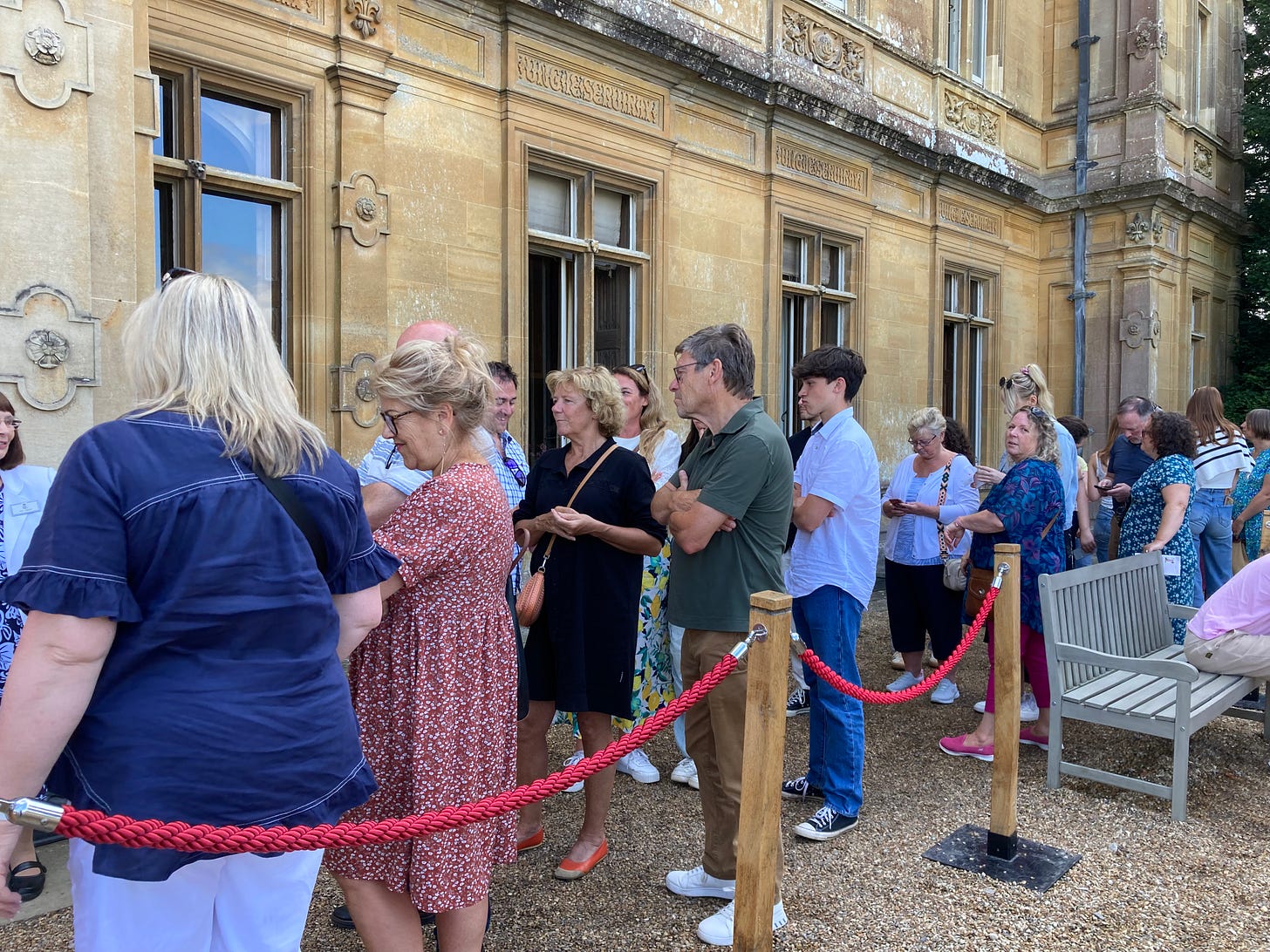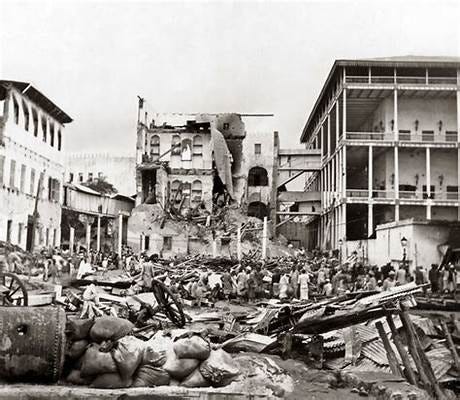Last week, the Offspring Militant and I went to visit Highclere Castle. As you probably can’t avoid knowing, Highclere is where they filmed Downton Abbey, which makes visiting the house simultaneously a bit weird and also quite revealing of our relationships with country houses and their occupants.
So we start with the queue, which contains a lot more American and European visitors than come to your average National Trust property. While we wait to be admitted in groups of eight, we are told very firmly that there are no photos because this is a private house. So here is the queue outside.
Pictures on my phone are usually how I take notes in this kind of place, so I’m a bit miffed, and so the Offspring is deputed to type on her phone. The first note is:
something to be said about a symbol of vast wealth and privilege sharing an architectural style with the building representing public power (it looks like parliament)
This is true. Highclere looks exactly like the Houses of Parliament, but made into a more regular shape with the tower in the middle, and it’s like that because it was designed by the same architect, Charles Barry, at the same time as he was working in Westminster. Apparently that’s Gothic while Highclere is Jacobean but it’s very hard to tell the difference. Welcome to the country house as power house.
But once we’re in the no photos rule starts to be a bit ironic, because what keeps attracting our attention is the photos. From the hallways onwards, each of the downstairs rooms has an easel holding a huge picture of Downton Abbey being filmed. This is the content people are here for (and which will get a whole other post another day).
These are not the only photos we are faced with. We are not supposed to take pictures because Highclere is still a family house. Decoratively, this is expressed by every single flat surface holding serried ranks of photo frames, all containing photographs of the family. The repetitions of children and parents and horses and dogs is endless, only broken up by the occasional picture of the Queen or, in what must be some kind of glorious high point, the family with the Queen watching a horse.
At this point I would have used a stock image of Highclere but it’s notable that they’ve taken a lot of the photos away to shoot these…
The obvious question is can these people not remember what they look like? In which case I can tell them (and you): they have floppy blond fringes and a look of benign uncuriousness, like well-fed Labradors. But that’s not the point. Because these pictures aren’t unique to Highclere, they stand on pianos, desks and windowsills wherever the aristocracy are still in residence. These photos are the modern offspring of the portrait gallery.
Every stately home worth its salt is full of portraits, mostly old and dark, and almost entirely of the family and their monarchs. The message is clear - we’ve been here for a long time and we like the royal family. But more than that, they are a clear injunction to remember the bloodline. The right to rule and to have more money and power is something which has been passed down from father to son for a very long time and so we shouldn’t change it. Like monarchy, like aristocracy.
Because the upper classes are reluctant to change anything if they don’t have to (for goodness sake, the next step might be socialism), they still get their portraits painted at least once every generation. So the photographs in their frames are not so much replacements as multipliers, an endless repetition across every possible surface of the idea that breeding and lineage and continuity are what matters here.
That, it turned out, wasn’t the half of it. In the upstairs, we only really got to peer into the bedrooms from the corridor, which meant a lot of slow shuffling as people appreciated “Lady Edith’s Room” and so on. This meant that we got to spend quite a lot of time staring at the pictures on the wall. This is where it got interesting.
We started with the opening of the Rhodesian Railway, an event attended almost entirely by white people in suits or large Victorian skirts. Quite colonial but not entirely indefensible.
The next wall display, though, was a set of photos of Zimbabwe in the 1890s. To be precise of a very particular moment then, because these are before and after photos. So there is one of the Sultan’s Palace as it was, and then this.
There’s also two pictures of the Sultan’s yacht Thrush; one in which it is sailing and then another when it is just three masts sticking up out of the water, along with several more of things which have been damaged.
What’s happening here, it turns out, is the Anglo-Zanzibar War of 1896, which is mostly famous for being the shortest war in history, as it lasted for at most 48 minutes.
Which is sort of funny. But also not, because the War is British Imperialism condensed into under an hour. Zanzibar was a “British protectorate”, aka a bit of Empire that they didn’t want the bother of actually administering. When the reigning Sultan died, the wrong heir - in the eyes of the British - took over and refused to stand down. So the British navy bombed Zanzibar. Five hundred Zanzibari men and women were killed, and the bombardment resulted in looting and riots; one English petty officer was injured but made a full recovery. And the British got their way.
I have no idea which Herbert of Highclere was involved in this, or for what other reason these photos are in the house, but who on earth thought it was a good idea to display them to the public. I have many, many issues with the way that the National Trust set out their stately homes, but you can at least be relatively sure that someone might have asked themselves whether this was something to be proud of nowadays. There on the other hand, perhaps it’s good that the upper classes get to tell us who they are.
And go back up and look at the queue again. Every single person there is white. These big houses are not just neutral places of beauty and leisure, and a nice place to have a picnic. They uphold a set of values and attitudes which we really shouldn’t be taking for granted.





